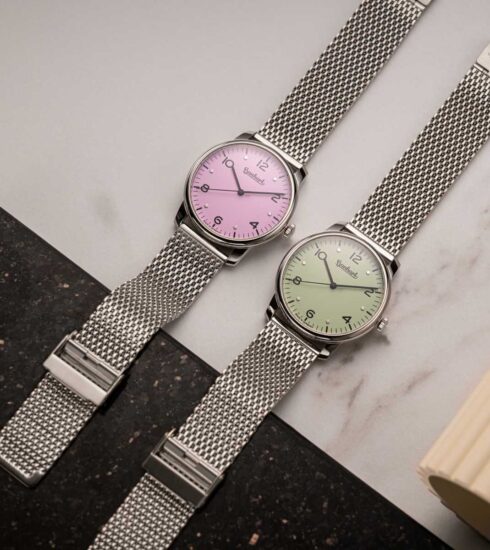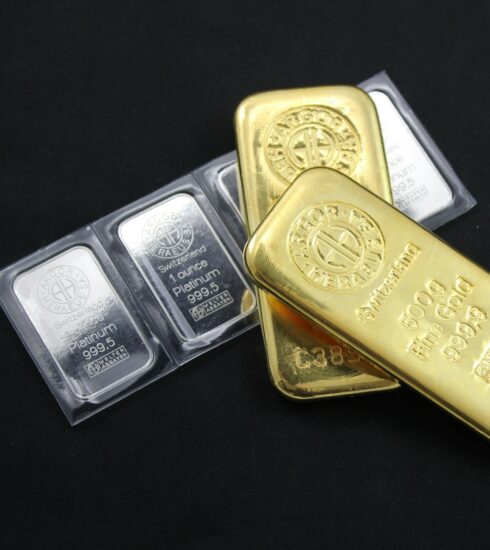"Speedmaster Moonwatch": Officially suitable for space travel - Omega looks back on 60 years in the air
"Speedmaster Moonwatch": Officially suitable for space travel - Omega looks back on 60 years in the air
On March 1, 1965, Omega's Speedmaster was declared "flightworthy for all manned space missions" by NASA. This marked the beginning of an extraordinary journey into space for the Swatch Group brand—including every moon landing in history.

In 1962, US President John F. Kennedy told his audience during his famous speech at Rice University:
“We decided to go to the moon.”
John F. Kennedy
What's more, he promised to achieve this goal within the same decade. Thus, the US race to space had begun.
Mechanical wristwatches as backup in space
The nation's first manned space program, the Mercury program, became famous for its courageous pilots, nicknamed the "Mercury Seven." When the program ended in 1963, NASA astronauts asked their mission director, Deke Slayton, to be provided with a reliable wristwatch for future missions.
The watches were intended to serve as a backup. If, for example, the digital timers on board the spacecraft failed, the astronauts would have only the mechanical watches on their wrists.
And so, in 1964, Slayton sent a request for “high-quality chronographs” to various watch manufacturers around the world.
Of all the watch brands that received the letter, only four responded—including Omega. Each company was asked to submit "three wrist chronographs" that would undergo particularly rigorous testing.
One model was immediately rejected as unsuitable because it wasn't a wristwatch. NASA engineer James Ragan tested the remaining three for safety, reliability, and quality, as he did with all devices intended for use in spacecraft.



To receive certification, each watch had to pass all eleven tests. And they were quite demanding. They included temperature, vacuum, humidity, corrosion, shock resistance, acceleration, pressure, vibration, and noise levels.
Two watches failed the high-temperature test. In one of these timepieces, the central seconds hand had bent and interfered with the other hands. In another, the chronograph crystal had deformed and separated from the case.
A series model wins the contract – also from the astronauts
The "Speedmaster ST 105.003" passed all eleven tests flawlessly. And the watch wasn't even specifically designed for NASA use. Almost exactly the same model had been available for purchase in the brand's boutiques since 1957.
And from the very beginning, it was equipped with numerous protective technologies. These included O-ring seals and the so-called Naiad crown. This enabled water resistance to 60 meters. Furthermore, the Hesalit crystal offered advantageous flexibility, making it shatter-resistant even under heavy impacts.
Originally designed for racing drivers, the "Speedmaster" also had a lot to offer in terms of functionality. It was the first watch to feature a tachymeter scale located on the bezel instead of the dial, as well as a particularly legible dial. This was further optimized for NASA by applying tritium luminous material to the baton hands and hour markers.

The timepiece was powered by the 321 chronograph movement with a 30-minute and a 12-hour counter as well as a column wheel mechanism.

NASA engineer James Ragan said after the successful test series: "Even I was surprised that any of the watches passed the tests. The conditions were designed for devices installed in spacecraft. It was quite challenging. These were the toughest tests a device could be subjected to."
But the watch still faced one final test—probably the most important of all. The watches also required the personal approval of the astronauts themselves.
Ragan presented the Speedmaster and other watches to the crews so they could examine and evaluate the timepieces themselves. Without knowing the test results, the astronauts returned unanimously declaring the Speedmaster their preferred model.
"That made my life a lot easier. I could go to the program managers and say, 'This watch has passed all the tests and the astronauts want it,'" Ragan later reported.
The journey into the infinite expanses begins
Just three weeks after certification by NASA on March 23, 1965, the Speedmaster's first space trip began, on the wrists of Virgil "Gus" Grissom and John Young during their Gemini 3 mission. The only change to the watches was the addition of a long Velcro strap that could be worn over a spacesuit.
Further journeys into the universe of the "Speedmaster" and its reissues followed. Most notably, it was worn by Ed White during the first American spacewalk in 1965 and by the crew of Apollo 8, who saw the far side of the moon for the first time in 1968.
The “Speedmaster” lands on the moon
Meanwhile, NASA was getting closer to the goal of landing on the moon, announced by John F. Kennedy in 1962. On July 20, 1969, the time had come when Apollo 11 landed on the moon for the first time in human history.

Neil Armstrong and Buzz Aldrin spent two and a half hours on the lunar surface, and at that moment, Omega's Speedmaster became the first watch on the moon—and thus the legendary "Moonwatch." Incidentally, it was used on every subsequent moon landing.
The “Moonwatch” conquers the Earth
The subsequent “Speedmaster” models for use on our home planet hardly differed at first glance from the version produced 60 years ago.
But that's deceptive. Omega has continually optimized and improved the "Speedmaster Moonwatch" in terms of materials and technology, without neglecting the watch's DNA.
NASA-tested watch ST 105.003
The Speedmaster Caliber 321 311.30.40.30.01.001 from 2020
The Speedmaster Moonwatch 310.30.42.50.01.001 from 2021



Approved by NASA in 1965, this 39.7-millimeter model featured a double-graduated caseback engraved with "Speedmaster" and Omega's seahorse emblem, and featured the 3rd generation "Speedmaster" design.
Inspired by the third generation, certified by NASA in 1965, Omega launched this 39.7-millimeter model in 2020—a near-perfect replica of the original. To provide a view of the mechanics of the Caliber 321, it features a sapphire crystal caseback.
Today's "Speedmaster Moonwatch" measures 42 millimeters in diameter and is inspired by the 4th generation of the watch worn by NASA astronauts on the moon and is the latest version of the Co-Axial Master Chronometer.



The black dial was also coated with tritium luminous material for even better legibility. It was also the last Speedmaster not to bear the "Professional" inscription. The tachymeter scale on the bezel also features two small identifying marks of the "ST 105.003": a dot above the 90 and a dot diagonally opposite the 70.
This black gradient dial is as faithful to the original as possible, incorporating similar features. These include the vintage logo and the original "Speedmaster" font. As a modern update, the tritium on the indices has been replaced with a Superluminova coating. The "Speedmaster Caliber 321" also retains the famous dots of the original in their original location.
The case back is engraved with the words "Flight-qualified by NASA for all manned space missions" and "The first watch worn on the Moon" around the seahorse emblem in the center. With the introduction of the caliber 3861 in 2021, the inscription "Co-Axial Master Chronometer" was also added. The case of this "Moonwatch" features twisted lugs and an asymmetrical shape that protects the crown and pushers.



The watch tested by NASA was distinguished by its symmetrical shape and straight lugs. It was the last Speedmaster without a crown guard. From this generation onward, it was known as the "Moonwatch" after its historic moon landing.
Instead of the original steel with an aluminum insert, Omega has replaced the 2020 bezel with a polished black ceramic bezel ring with a white enamel tachymeter scale. The straight lugs and symmetrical case are the same as those of the original watch tested by NASA.
The black gradient dial features the "Professional" designation, introduced in 1965. Starting in 1997, the models were treated with Luminova for improved legibility. The logo and "Speedmaster" font were also updated. The 2021 model features a black anodized aluminum bezel ring—a design feature that has been a feature of the Speedmaster since the second generation. Pretty much everything else remains exactly the same as the 1964 design.



The 1949 Caliber 321 was robust and had received a number of innovative improvements for the later NASA “Speedmaster,” while retaining the complex column-wheel mechanism.
The original Caliber 321 was used until 1968. It then made a comeback in 2020 after two years of intensive research and development. This included the use of tomography (a digital scanning method) to peer inside the "Speedmaster ST 105.003," worn by astronaut Eugene Cernan during the Apollo 17 mission in 1972.
The Caliber 3861 is the current successor to the Caliber 321. Compared to its predecessors, it offers a longer power reserve, improved chronometric performance, and greater resistance to magnetic fields. Its innovative features include Omega's Co-Axial escapement and a silicon Si14 balance spring, thanks to which the caliber has passed all eight Master Chronometer tests.






